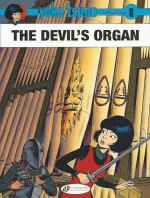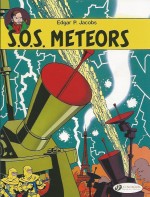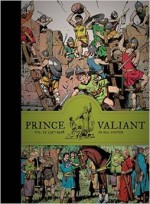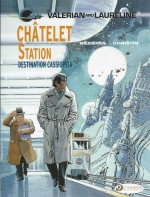

By Kou Yaginuma (Vertical)
ISBN: 978-1-935654-24-7
Kou Yaginuma first captured the hearts and minds with poignant short story 2015 Nen no Uchiage Hanabi (2015: Fireworks, published in Gekkan Comics Flapper, June 2000), before expanding the subject and themes into a major manga epic combining hard science and humanist fiction with lyrical mysticism and traditional tales of school-days and growing up.
2024 AD: diminutive teenager Asumi Kamogawa always dreamed of going into space. From her earliest moments the solitary child gazed up at the stars with imaginary friend Mr. Lion, especially gripped by the twinkling glow of Virgo and alluring binary star Spica.
An isolated, serious child, she lived with her father, a common labourer who had once worked for the consortium which built the rockets for Japan’s Space Program.
When Asumi was one year old, the first Japanese manned launch ended in catastrophe after rocket-ship ShishigÅ (“The Lionâ€) exploded during its maiden flight: crashing to earth on the coastal city of Yuigahama. Hundreds were killed and many more injured, including Asumi’s mother.
Maimed and comatose, the matron took years to die. The shock crushed her grieving husband and utterly traumatised infant Asumi.
In response to the disaster Japan set up an astronautics and space sciences training facility where, after years of determined struggle, Asumi was accepted by the Tokyo National Space School. Slowly making friends like Shinnosuke Fuchuya (who used to bully her as a child back in Yuigahama), boisterous Kei Oumi, chilly, distant Marika Ukita and ultra-cool Shu Suzuki, Asumi inexorably moved closer to her unshakable dream of going to the stars.
Against all odds – she is small, shy, retiring, looks weak and is very poor – Asumi endures and always succeeds. She still talks with Mr. Lion, who seems to be the ghost of an astronaut from the ShishigÅ…
Individual instalments in these compelling monochrome volumes are presented as “Missionsâ€, methodically combining into an overarching mosaic detailing the subtle interconnectedness of generations of characters, all linked by the call of the heavens.
Volume 10 comprises numbers 56-64, and includes another enchanting autobiographical vignette from the author’s own teenage years in his Another Spica occasional series.
The story resumes as the students all head out to the mountains for another gruelling series of metal and physical tortures claiming to be training exercises, which give the fated five another chance to bond as arduous underwater repair protocols take on an added dimension as they compete against robots.
The daunting subtext is simple: the mechanoids are far more appealing to the government and funding authorities. They cost less to train and there’s no public outcry if they are lost. The stars-struck kids’ only hope is that the machines cannot yet compete with the pluck and ingenuity of living astronauts…
Whilst the students fret and train, back at Space School Asauri News journalist Ichimura is getting closer to corroborating his suspicions: Ukita is not a normal human and her “father†– publicity-shy life-sciences mogul Senri Ukita – has done something at once astonishing and ethically shady following the death of his first daughter years ago…
The thought triggers another flashback when, as a boy in Yuigahama, Ichimura (and his doomed friend who became an astronaut on the Lion) waited by the bed of a pale, chronically ill little girl and begged her unfeeling father not to take her away…
Mission: 57 opens with Asumi and her companions still valiantly giving their all in a modern “John Henry†battle against encroaching automation, but the stakes subtly change when she talks to the robot designers and understands the tragic passion which drives them to remove the necessity for humans in space. They too learn something from her counterarguments before 58 sees the end of the one-sided exercise and the dejected students’ glum return to school for the dog-days of summer in Mission: 59.
As Kei tries to lift everyone’s spirits Marika slips away to pick up another 90 days worth of the experimental drugs which keep her unique condition under control and time slips back again to the long-ago days when she read the diary of the other Marika: the weak one who preceded her…
Later the gang meet up and – due to a just a little chicanery – opt to spend another summer vacation in the unlikely seaside resort of Yuigahama. Later Marika confides in Asumi; suggesting that whatever happens in years to come, those who are left should always meet there in summer. Later, as they all trundle down on the scenic train their spirits rise, except perhaps star-boy Suzuki who sleeps quietly, utterly unaware that he has yet another nosebleed…
The restful recuperation begins in Mission: 60 with a visit to the shrines to the dead from the crash and gentle little bonding moments – except for grouchy Fuchuya who is once again pressed into service at the family fireworks factory. It’s the not the work he minds: it the continuing frustration that he cannot find again the specific blend of chemicals which produced just that special shade of green flaming flare that his beloved grandfather could…
As the Annual Fireworks Festival approaches in Mission: 61, a casual gift from Shu to one of the girls (a trinket victoriously claimed at the one of the bustling game stalls) takes on special significance whilst they all pass time on the beach discussing his imminent departure for America. The mood affects Marika who finally shares the truth about her genetic disease/medical condition… and why it means she will probably never make it to space…
The journey back to Tokyo is subdued and as Kei incessantly takes more photos, she feels no urge to wake her sleeping comrades…
Asumi has stayed behind with her father and spends time mulling over the complexities of life with Mr. Lion in Mission: 62, as does Fuchuya, whose discussions with his big brother about the disposition of the fireworks business inevitably leads to his meeting up with annoying Asumi and pondering how and why they got to where they are.
Mission: 63 finds them back in Tokyo a little later, amidst an increasing Press scrum as Suzuki’s departure nears, before everything changes in Mission: 64 as shocking news comes that the inseparable five are now only four…
To Be Continued…
Rounding off this volume in a wistfully autobiographical ‘Another Spica’ episode culled from author Yaginuma’s lovelorn days as a part-time server on a soft-drink stand in a theme park; focussing on his lonely journeys to distant places on the local railway line gathering images which would one day become the book you’re reading…
These magically moving marvels originally appeared in 2006-2007 as Futatsu no Supika 11 and 12 in the Seinen manga magazine Gekkan Comics Flapper, targeted at male readers aged 18-30, but this ongoing, unfolding beguiling saga is perfect for any older kid with stars in their eyes…
Twin Spica ran from September 2001-August 2009: sixteen volumes tracing the trajectories of Asumi and friends from callow students to trained astronauts, and the series has spawned both anime and live action TV series.
This delightful saga has everything: plenty of hard science to back up the informed extrapolation, an engaging cast, mystery and frustrated passion, alienation, angst and true friendships; all welded seamlessly into a joyous coming-of-age drama with supernatural overtones, raucous humour and masses of sheer sentiment.
These books are printed in the Japanese right to left, back to front format.
© 2011 by Kou Yaginuma/MEDIA FACTORY Inc. Translation © 2011 Vertical, Inc. All rights reserved.









